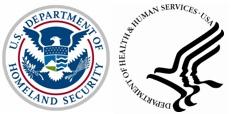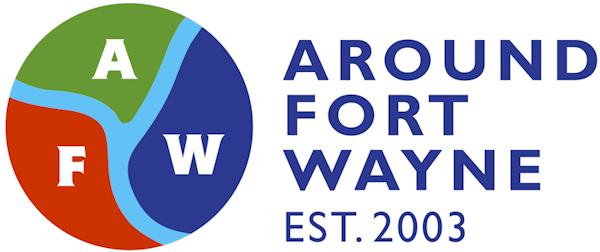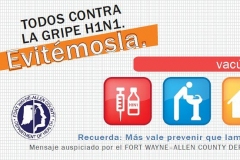
Official statements from HHS Secretary Kathleen Sebelius and DHS Secretary Janet Napolitano on Who Decision to Declare Novel H1N1 Virus Outbreak a Pandemic:
U.S. Department of Health and Human Services Secretary Kathleen Sebelius and U.S. Department of Homeland Security Secretary Janet Napolitano issued the following statements today in response to the World Health Organization’s (WHO) decision to raise the pandemic threat level on the novel H1N1 virus.
“Today’s decision by the WHO was expected and doesn’t change what we have been doing here in the United States to prepare for and respond to this public health challenge. Once we saw how fast this virus was spreading, we activated our pandemic plans and started doing all the things we needed to do to keep the public as safe and secure as possible,” said Secretary Sebelius. “What this declaration does do is remind the world that flu viruses like H1N1 need to be taken seriously. Although we have not seen large numbers of severe cases in this country so far, things could possibly be very different in the fall, especially if things change in the Southern Hemisphere, and we need to start preparing now in order to be ready for a possible H1N1 immunization campaign starting in late September.”
“We responded to the H1N1 outbreak from the outset with the presumption that a pandemic was likely, so this decision comes as no surprise. We acted aggressively to stay ahead of the virus as it spread across the country. Now our challenge is to prepare for a possible return in the fall,” said Secretary Napolitano. “The Obama Administration has been working together across the government and will continue to do so over the weeks and months ahead to keep the American people safe. We are reaching out to our partners in state and local government, in school districts and the private sector to urge them to modify and update their pandemic plans. We are working with our scientists to test and prepare a possible vaccine. And we are working with governments around the world to share what we know and learn from what is happening in their countries.”
Statement from Dr. Margaret Chan, Director-General of the World Health Organization (WHO)
World now at the start of 2009 influenza pandemic
In late April, WHO announced the emergence of a novel influenza A virus.
This particular H1N1 strain has not circulated previously in humans. The virus is entirely new.
The virus is contagious, spreading easily from one person to another, and from one country to another. As of today, nearly 30,000 confirmed cases have been reported in 74 countries.
This is only part of the picture. With few exceptions, countries with large numbers of cases are those with good surveillance and testing procedures in place.
Spread in several countries can no longer be traced to clearly-defined chains of human-to-human transmission. Further spread is considered inevitable.
I have conferred with leading influenza experts, virologists, and public health officials. In line with procedures set out in the International Health Regulations, I have sought guidance and advice from an Emergency Committee established for this purpose.
On the basis of available evidence, and these expert assessments of the evidence, the scientific criteria for an influenza pandemic have been met.
I have therefore decided to raise the level of influenza pandemic alert from phase 5 to phase 6.
The world is now at the start of the 2009 influenza pandemic.
We are in the earliest days of the pandemic. The virus is spreading under a close and careful watch.
No previous pandemic has been detected so early or watched so closely, in real-time, right at the very beginning. The world can now reap the benefits of investments, over the last five years, in pandemic preparedness.
We have a head start. This places us in a strong position. But it also creates a demand for advice and reassurance in the midst of limited data and considerable scientific uncertainty.
Thanks to close monitoring, thorough investigations, and frank reporting from countries, we have some early snapshots depicting spread of the virus and the range of illness it can cause.
We know, too, that this early, patchy picture can change very quickly. The virus writes the rules and this one, like all influenza viruses, can change the rules, without rhyme or reason, at any time.
Globally, we have good reason to believe that this pandemic, at least in its early days, will be of moderate severity. As we know from experience, severity can vary, depending on many factors, from one country to another.
On present evidence, the overwhelming majority of patients experience mild symptoms and make a rapid and full recovery, often in the absence of any form of medical treatment.
Worldwide, the number of deaths is small. Each and every one of these deaths is tragic, and we have to brace ourselves to see more. However, we do not expect to see a sudden and dramatic jump in the number of severe or fatal infections.
We know that the novel H1N1 virus preferentially infects younger people. In nearly all areas with large and sustained outbreaks, the majority of cases have occurred in people under the age of 25 years.
In some of these countries, around 2% of cases have developed severe illness, often with very rapid progression to life-threatening pneumonia.
Most cases of severe and fatal infections have been in adults between the ages of 30 and 50 years.
This pattern is significantly different from that seen during epidemics of seasonal influenza, when most deaths occur in frail elderly people.
Many, though not all, severe cases have occurred in people with underlying chronic conditions. Based on limited, preliminary data, conditions most frequently seen include respiratory diseases, notably asthma, cardiovascular disease, diabetes, autoimmune disorders, and obesity.
At the same time, it is important to note that around one third to half of the severe and fatal infections are occurring in previously healthy young and middle-aged people.
Without question, pregnant women are at increased risk of complications. This heightened risk takes on added importance for a virus, like this one, that preferentially infects younger age groups.
Finally, and perhaps of greatest concern, we do not know how this virus will behave under conditions typically found in the developing world. To date, the vast majority of cases have been detected and investigated in comparatively well-off countries.
Let me underscore two of many reasons for this concern. First, more than 99% of maternal deaths, which are a marker of poor quality care during pregnancy and childbirth, occurs in the developing world.
Second, around 85% of the burden of chronic diseases is concentrated in low- and middle-income countries.
Although the pandemic appears to have moderate severity in comparatively well-off countries, it is prudent to anticipate a bleaker picture as the virus spreads to areas with limited resources, poor health care, and a high prevalence of underlying medical problems.
Ladies and gentlemen,
A characteristic feature of pandemics is their rapid spread to all parts of the world. In the previous century, this spread has typically taken around 6 to 9 months, even during times when most international travel was by ship or rail.
Countries should prepare to see cases, or the further spread of cases, in the near future. Countries where outbreaks appear to have peaked should prepare for a second wave of infection.
Guidance on specific protective and precautionary measures has been sent to ministries of health in all countries. Countries with no or only a few cases should remain vigilant.
Countries with widespread transmission should focus on the appropriate management of patients. The testing and investigation of patients should be limited, as such measures are resource intensive and can very quickly strain capacities.
WHO has been in close dialogue with influenza vaccine manufacturers. I understand that production of vaccines for seasonal influenza will be completed soon, and that full capacity will be available to ensure the largest possible supply of pandemic vaccine in the months to come.
Pending the availability of vaccines, several non-pharmaceutical interventions can confer some protection.
WHO continues to recommend no restrictions on travel and no border closures.
Influenza pandemics, whether moderate or severe, are remarkable events because of the almost universal susceptibility of the world’s population to infection.
We are all in this together, and we will all get through this, together.
Thank you.



